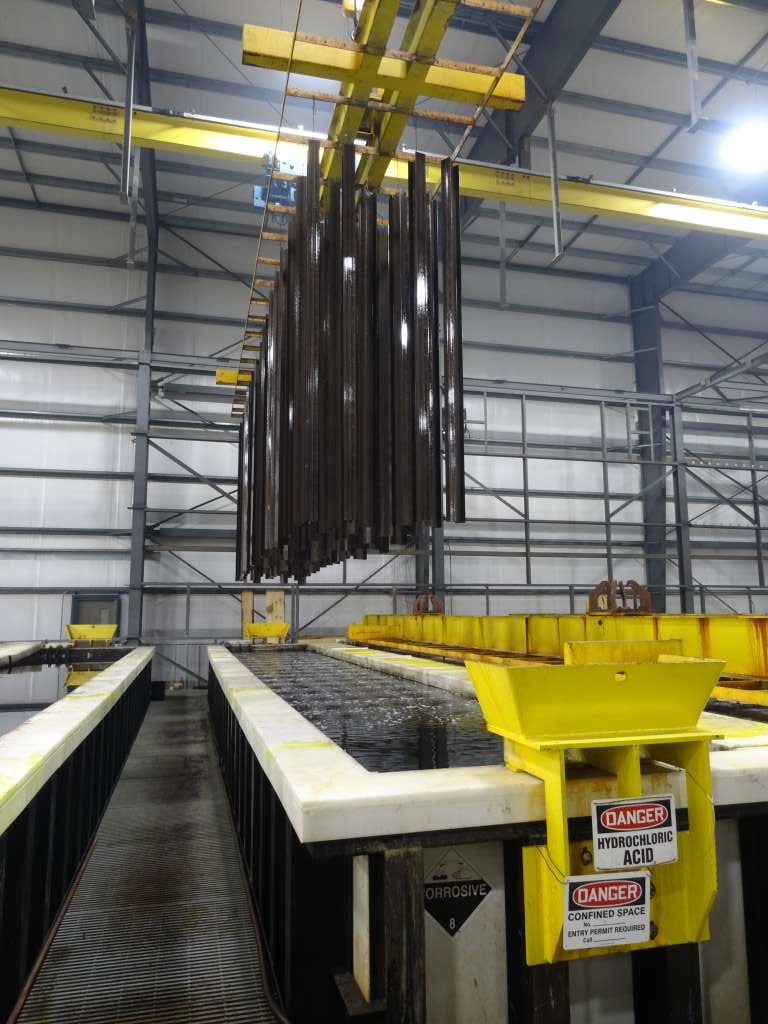What is Galvanizing?
Hot-dip galvanizing (HDG), as referenced on this site, is the process of dipping fabricated steel into a kettle or vat containing molten zinc. The process is inherently simple which provides a distinct advantage over other corrosion protection methods. While the steel is in the kettle, the iron in the steel metallurgically reacts with the molten zinc to form a tightly-bonded alloy coating that provides superior corrosion protection to steel.
The information throughout this section on durability, longevity, cost, and sustainability applies only to the hot-dip galvanizing (commonly referred to as batch, general, or after-fabrication galvanizing). It is important to understand not all zinc coatings are created equally; thus, applying any of the information provided about hot-dip galvanizing to other zinc coatings is not accurate or recommended.
Batch Hot-Dip Galvanizing
Batch hot-dip galvanizing, also known as general galvanizing, produces a zinc coating by completely immersing the steel product in a bath (kettle) of molten zinc. Prior to immersion in the zinc bath, the steel is chemically cleaned to remove all oils, greases, soil, mill scale, and oxides. Surface preparation is critical as zinc will not react with unclean steel.
After surface preparation, the steel is immersed in the molten (830 F) zinc bath. The bath consists of more than 98% pure zinc and the remaining 2% or less consists of additives most commonly aluminum, nickel, and bismuth. These additives help with zinc fluidity and consumption, coating appearance, and other efficiencies. While in the galvanizing kettle, the molten zinc metallurgically reacts with the iron in the steel to form the coating.
Hot-dip galvanized coatings are used on many materials in construction sectors from electric utility to artistic sculptures. Ranging in size from small parts such as nuts, bolts and nails to large structural shapes, galvanizing is integral to North American infrastructure. Most commonly batch hot-dip galvanizing is used in atmospherically exposed steel; however, it is also used in fresh and salt water applications, buried in soil, embedded in concrete, and much more.
Size can be a limitation to the application of hot-dip galvanizing; however, the average length of zinc baths in North America is 40 feet and 55-60 foot kettles are common. Utilizing progressive dipping immersing one portion of the product and then the other significantly increases the maximum size that can be accommodated to nearly double the bath size.

